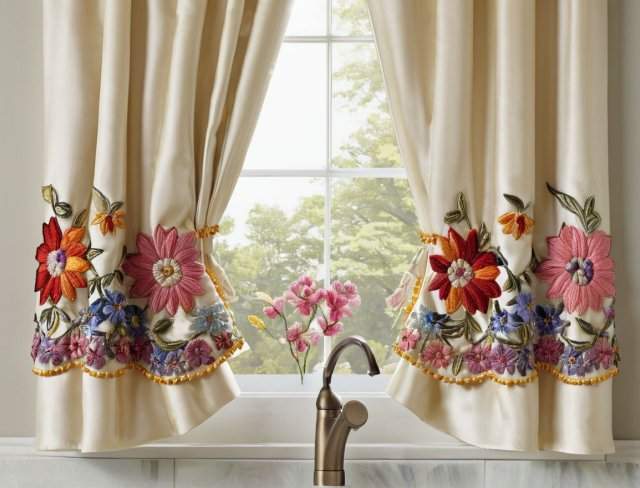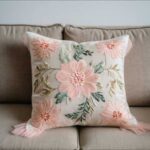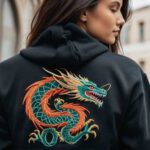Decorative Window Hangings
An Introduction to Curtain Embroidery
Introduction
Curtain embroidery, a timeless choice in interior design, is more than mere decoration, it is a narrative woven into fabric. In this exploration, we navigate the intricate world of curtain embroidery, from its historical origins to contemporary applications. Whether seasoned enthusiasts or newcomers, prepare to immerse in the artistry, tradition, and creativity defining this enduring craft.
From hand stitched intricacies to modern innovations, curtain embroidery transcends ornamentation, weaving narratives rich in culture and meaning. Join us as we unravel the threads of technique, tradition, and innovation, discovering how curtain embroidery transforms spaces into sanctuaries of beauty, emotion, and self expression.
Curtain Embroidery Techniques and Traditions
Curtain embroidery is steeped in rich traditions that have been passed down through generations, each technique bearing the mark of meticulous craftsmanship and artistic expression. Hand embroidery, the oldest and most revered method, involves the skilled manipulation of needle and thread to create intricate designs on fabric. Artisans meticulously stitch each motif, often using traditional stitches such as satin stitch, chain stitch, and cross stitch, imbuing the fabric with texture and dimension.
While hand embroidery remains a beloved practice among purists, modern advancements in technology have introduced a new era of innovation to the craft. Machine embroidery, characterized by its precision and efficiency, utilizes computerized machines to replicate intricate designs with remarkable accuracy. This method allows for greater consistency and speed in production, making it ideal for large scale projects and commercial applications.
Despite the advent of modern techniques, many artisans continue to honor traditional embroidery methods, preserving age old techniques and cultural heritage. In regions around the world, such as India, China, and Europe, distinct styles of embroidery have emerged, each reflecting the unique cultural identity and artistic sensibilities of its creators. Whether it’s the vibrant hues of Indian Kantha embroidery or the delicate motifs of Chinese silk embroidery, each tradition carries with it a rich tapestry of history and symbolism.
Beyond the technical aspects of embroidery, there exists a deeper connection to tradition and ritual. In many cultures, embroidery is not merely a decorative art form but a sacred practice imbued with spiritual significance. From ceremonial garments to ceremonial hangings, embroidered textiles often play a central role in rituals and celebrations, symbolizing fertility, protection, and prosperity.
As artisans continue to push the boundaries of creativity and innovation, the traditions of curtain embroidery evolve, blending the old with the new to create a tapestry of timeless beauty and cultural richness. Whether practiced by master artisans or enthusiastic amateurs, curtain embroidery remains a testament to the enduring power of human creativity and expression.
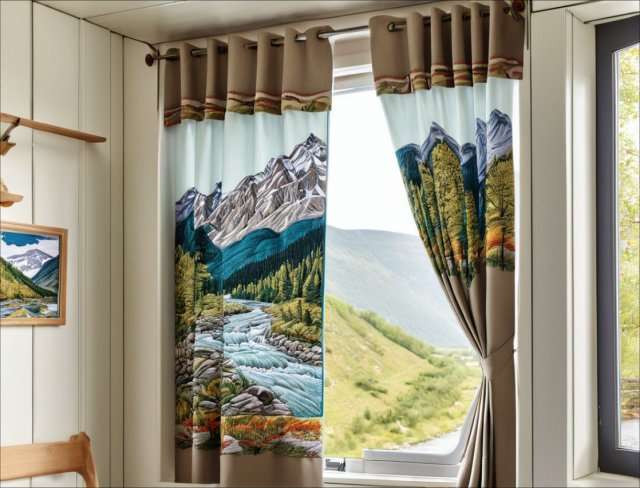
Curtain Materials and Composition
Curtain embroidery begins with the selection of the curtain material, which plays a crucial role in determining the overall look and feel of the finished piece. Various fabrics are commonly used for curtain embroidery, each with its own unique properties and composition. The weight, texture, and drape of the fabric all contribute to the final aesthetic and functionality of the embroidered curtain.
For instance, heavier fabrics like velvet or brocade lend a sense of luxury and opulence to the finished piece, making them ideal for formal settings or grand interiors. On the other hand, lightweight fabrics such as chiffon or organza offer a delicate, ethereal quality, allowing light to filter through and creating an airy ambiance in the room.
In addition to considering the physical attributes of the fabric, embroiderers must also take into account its compatibility with different embroidery techniques and designs. Some fabrics, like tightly woven linen or cotton, provide a stable foundation for intricate stitches and dense embellishments, while others, like silk or satin, require a more delicate touch to prevent puckering or distortion.
Moreover, the color and pattern of the fabric can significantly impact the overall design, serving as either a complementary backdrop or a striking contrast to the embroidered motifs. When it comes to curtain embroidery, the choice of material is paramount, as it not only influences the aesthetic appeal but also the durability and functionality of the finished product. Here’s a closer look at some common curtain materials and their compositions:
• Silk: Renowned for its luxurious sheen and soft texture, silk is a perennial favorite among aficionados of curtain embroidery. Derived from the silkworm cocoon, silk fabric boasts a natural luster that adds an air of elegance to any space. Its inherent strength and resilience make it an ideal canvas for intricate embroidery, allowing artisans to create detailed motifs with finesse and precision. Whether used in its pure form or blended with other fibers, silk curtains exude sophistication and refinement, making them a popular choice for formal settings and special occasions.
• Velvet: With its plush pile and sumptuous feel, velvet is synonymous with opulence and extravagance. Traditionally made from silk, cotton, or synthetic fibers, velvet fabric features a dense weave that lends itself well to embroidery. The rich texture of velvet provides a striking contrast to intricate stitchwork, adding depth and dimension to embroidered curtains. From regal damasks to ornate brocades, velvet curtains are prized for their tactile appeal and timeless allure, making them a favorite among connoisseurs of luxury décor.

• Linen: prized for its durability, breathability, and natural aesthetic, linen is a versatile choice for curtain embroidery. Made from the fibers of the flax plant, linen fabric offers a rustic charm that complements a variety of interior styles. Its crisp texture provides a clean canvas for embroidery, allowing for precise stitching and intricate detailing. While linen curtains may lack the sheen of silk or the plushness of velvet, they make up for it with their understated elegance and understated sophistication, making them an ideal choice for casual and contemporary interiors.
• Cotton: valued for its softness, affordability, and easy care, cotton is a popular choice for everyday curtains. This natural fiber is renowned for its versatility, making it suitable for a wide range of embroidery techniques and designs. From simple cross stitch patterns to elaborate floral motifs, cotton curtains offer endless possibilities for creative expression. Additionally, cotton curtains are highly durable and resistant to fading, making them a practical choice for high traffic areas and homes with children or pets.
• Synthetic Fabrics: polyester, nylon, and other synthetic fabrics offer durability, affordability, and versatility, making them popular choices for curtain embroidery. These man made fibers are engineered to withstand the rigors of daily use, making them ideal for curtains in high traffic areas such as living rooms, kitchens, and bathrooms. While synthetic fabrics may lack the natural charm of silk or linen, they make up for it with their durability and ease of maintenance. Additionally, synthetic fabrics are available in a wide range of colors, textures, and finishes, allowing for endless creative possibilities in curtain embroidery.
By carefully considering the composition of the curtain material, artisans can create embroidered curtains that not only enhance the beauty of a space but also withstand the test of time.
Choice of Thread
The selection of thread in curtain embroidery is a critical decision that significantly influences the final outcome of the design. Artisans carefully consider factors such as thread weight, color, composition, and texture to achieve the desired aesthetic and functional qualities in their embroidered curtains. Traditionalists often opt for natural fibers such as cotton, silk, or wool, prized for their softness, sheen, and durability. These threads lend a timeless elegance to embroidered curtains, enhancing the overall beauty and sophistication of the design.
In addition to natural fibers, modern advancements have introduced a myriad of synthetic threads into the world of curtain embroidery. Polyester, nylon, and metallic threads offer unique properties such as strength, colorfastness, and metallic sheen, allowing artisans to experiment with bold and unconventional designs. Metallic threads, in particular, add a touch of glamour and sparkle to embroidered curtains, making them ideal for formal and festive occasions.
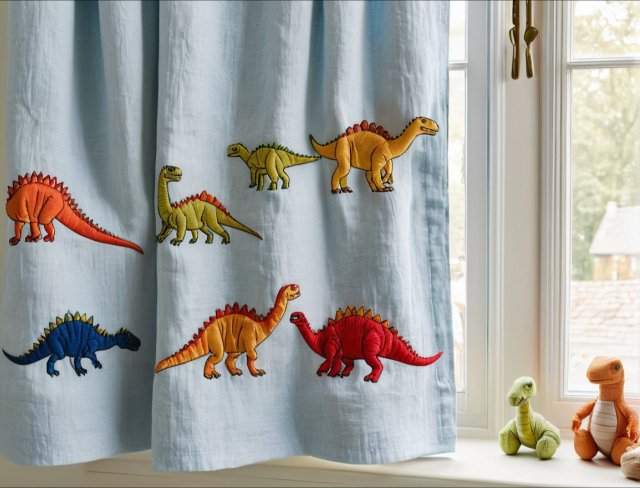
The weight and thickness of the thread also play a crucial role in the embroidery process. Fine threads are ideal for delicate detailing and intricate stitchwork, while heavier threads create bold, dramatic effects. Artisans may choose to layer threads of varying weights to add dimension and depth to their designs, creating visual interest and texture.
Color selection is another important consideration in thread choice, as it directly impacts the overall look and mood of the embroidered curtains. Artisans may opt for monochromatic schemes for a classic, understated elegance, or experiment with bold, contrasting colors for a more contemporary and vibrant aesthetic. Variegated threads, which feature multiple colors in a single strand, offer endless possibilities for creative expression, allowing artisans to achieve subtle gradients and intricate color blends in their designs.
Ultimately, the choice of thread in curtain embroidery is a deeply personal and artistic decision, guided by the vision and style of the artisan. Whether adhering to time honored traditions or pushing the boundaries of innovation, each thread selection adds its own unique character and charm to the embroidered curtains, transforming them into exquisite works of art that elevate any space with their beauty and craftsmanship.
Patterns and Designs
Patterns and designs are at the heart of curtain embroidery, offering endless opportunities for artistic expression and creative exploration. Whether drawing inspiration from nature, culture, or personal experiences, artisans infuse their designs with meaning, symbolism, and aesthetic appeal.
One of the most captivating aspects of curtain embroidery is the diversity of patterns and motifs available. From intricate florals to geometric abstractions, each design tells a story and evokes a mood. Floral motifs, for example, symbolize growth, beauty, and renewal, while geometric patterns represent harmony, balance, and order. Artisans often combine these elements to create visually stunning compositions that captivate the eye and elevate the ambiance of any room.
In addition to traditional motifs, contemporary designers often incorporate innovative techniques and materials to push the boundaries of design. Mixed media approaches, such as combining embroidery with painting or appliqué, add depth and texture to the fabric, creating dynamic and multidimensional effects. Digital embroidery software allows artisans to create intricate designs with precision and accuracy, opening up new possibilities for intricate detailing and customization.
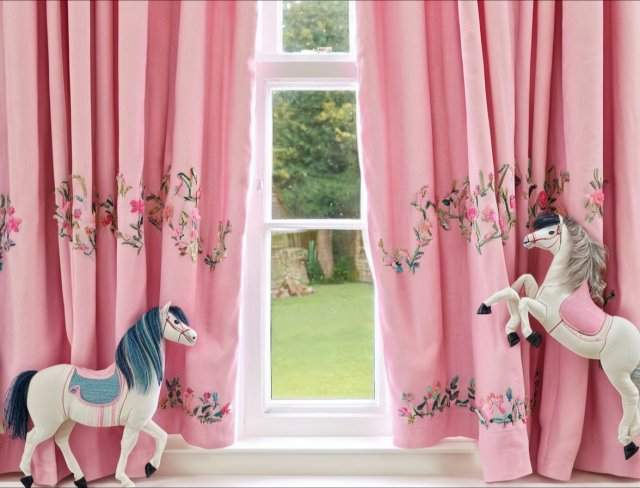
Cultural influences also play a significant role in curtain embroidery designs, with each region boasting its own distinctive style and aesthetic sensibilities. From the intricate patterns of Indian kantha embroidery to the bold colors and motifs of Mexican Otomi embroidery, each tradition carries with it a rich tapestry of history, heritage, and craftsmanship. By drawing inspiration from these diverse cultural traditions, artisans infuse their designs with depth, authenticity, and cultural resonance.
Beyond their aesthetic appeal, curtain embroidery designs often hold personal significance for the artisan and the homeowner alike. Whether commemorating a special occasion, celebrating a milestone, or expressing a cherished memory, embroidered curtains become more than just decorative pieces, they become cherished heirlooms imbued with sentiment and meaning.
As the art of curtain embroidery continues to evolve and adapt to changing tastes and trends, one thing remains constant, the power of patterns and designs to transform ordinary fabric into extraordinary works of art. Whether adorning the windows of a grand palace or the cozy corners of a humble abode, embroidered curtains add a touch of elegance, sophistication, and personality to any space, making them a timeless and beloved addition to any home.
Curtain Styles and Features
Curtains come in a wide array of styles and features, offering versatility and functionality to suit diverse tastes and practical needs. Let’s delve into the nuances of these variations, from varying levels of sheen to specialized features like valances and blackout capabilities, each contributing to the overall ambiance and utility of a room.
1. Sheen and Texture: Curtains vary in their sheen and texture, ranging from matte to glossy finishes and smooth to textured fabrics. The choice of sheen can impact the overall look and feel of a space, with matte fabrics lending a subtle elegance and glossy finishes adding a touch of sophistication. Similarly, textured fabrics can add depth and visual interest to curtains, creating a sense of warmth and coziness in the room.
2. Curtain Styles: Curtain styles encompass a wide range of designs, including traditional draperies, contemporary panels, and functional blinds. Draperies feature pleats, gathers, or folds, adding a sense of grandeur and opulence to windows. On the other hand, curtain panels offer a sleek and modern aesthetic, often characterized by clean lines and minimalistic design. Blinds provide versatility, allowing for adjustable light control and privacy with their adjustable slats or vanes.
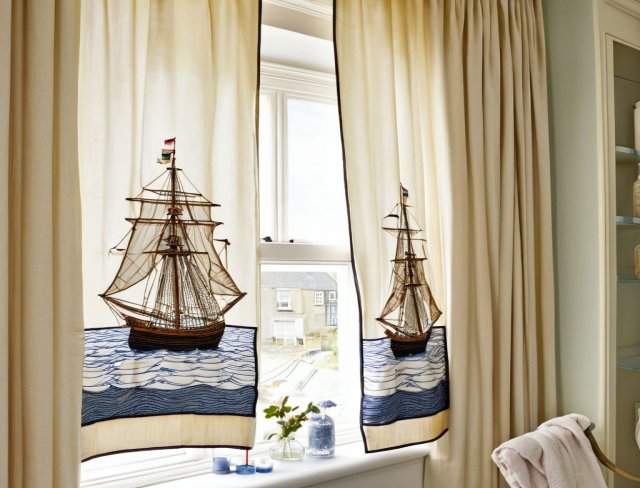
3. Valances and Swags: Valances and swags are decorative elements that adorn the top of curtains, adding flair and elegance to window treatments. Valances are fabric panels that hang across the top of curtains, often featuring pleats, ruffles, or scalloped edges. Swags, on the other hand, drape gracefully over the curtain rod, creating cascading folds that frame the window beautifully. These embellishments can enhance the visual appeal of curtains, creating a polished and cohesive look in the room.
4. Blackout Curtains: Blackout curtains are specially designed to block out light and provide privacy, making them ideal for bedrooms, nurseries, or media rooms. These curtains feature a thick, opaque lining that prevents light from penetrating through the fabric, ensuring a dark and tranquil environment for restful sleep or optimal viewing conditions. Additionally, blackout curtains can help regulate room temperature by insulating against heat and cold, making them both functional and energy efficient.
5. Thermal Curtains: Thermal curtains are designed to insulate windows and regulate room temperature by blocking out cold drafts in winter and heat in summer. These curtains feature a layer of thermal lining that acts as a barrier against external elements, helping to maintain a comfortable and consistent indoor climate. In addition to their energy saving benefits, thermal curtains also provide sound insulation, reducing outside noise for a quieter and more peaceful living environment.
By considering these variations in curtain styles and features, homeowners can select the perfect window treatments to enhance the aesthetics, functionality, and comfort of their living spaces. Whether seeking to add a touch of elegance with luxurious draperies or prioritize practicality with blackout or thermal curtains, the wide range of options available ensures that every window can be dressed to perfection.
Contemporary Applications
In today’s ever evolving world of interior design, curtain embroidery continues to captivate audiences with its timeless elegance and versatility. While rooted in tradition, contemporary applications of curtain embroidery push the boundaries of creativity and innovation, offering fresh perspectives and cutting edge techniques that resonate with modern sensibilities.
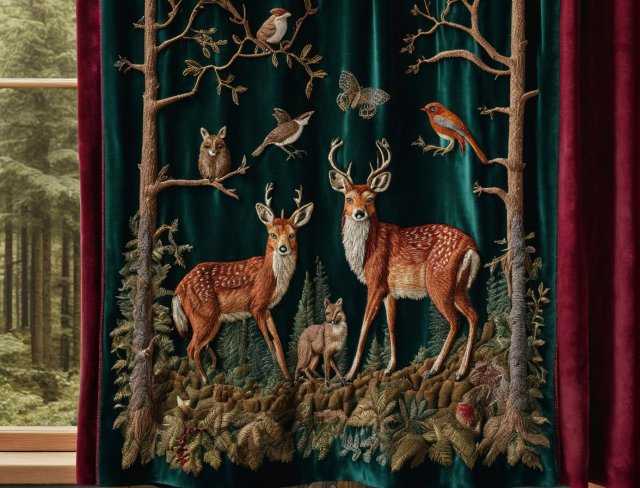
One of the most notable trends in contemporary curtain embroidery is the fusion of traditional craftsmanship with modern aesthetics. Designers are experimenting with bold colors, unconventional materials, and avant garde techniques to create curtains that are both visually striking and conceptually rich. From abstract geometric patterns to whimsical abstract designs, contemporary embroidered curtains serve as bold statements of individuality and style, adding a touch of drama and personality to any space.
Technological advancements have also played a significant role in shaping the contemporary landscape of curtain embroidery. Digital embroidery software and computerized machines have revolutionized the design process, allowing artisans to create intricate patterns and complex motifs with unprecedented precision and efficiency. This marriage of technology and craftsmanship has opened up new possibilities for customization and personalization, empowering homeowners to create curtains that reflect their unique tastes and preferences.
Another emerging trend in contemporary curtain embroidery is the emphasis on sustainability and eco conscious design. With growing awareness of environmental issues, designers are increasingly turning to sustainable materials and ethical production methods to create curtains that are not only beautiful but also environmentally responsible. From organic cottons and bamboo fibers to upcycled fabrics and eco friendly dyes, sustainable curtain embroidery offers a guilt free way to enhance your home while minimizing your carbon footprint.
Furthermore, contemporary curtain embroidery is breaking free from the confines of traditional window treatments, expanding into new realms of interior decor. Embroidered curtains are being used as room dividers, wall hangings, and even statement pieces of furniture, adding texture, color, and visual interest to any space. This versatility allows homeowners to experiment with different ways of incorporating embroidered curtains into their interiors, creating unique and personalized environments that reflect their individual tastes and lifestyles.
Contemporary applications of curtain embroidery are as diverse and dynamic as the artisans who create them. From avant garde designs to eco friendly innovations, curtain embroidery continues to evolve and adapt to the ever changing demands of modern living, offering homeowners endless possibilities for enhancing their spaces with beauty, creativity, and craftsmanship. As we look to the future, one thing is certain, the timeless allure of curtain embroidery will continue to inspire and delight generations to come.
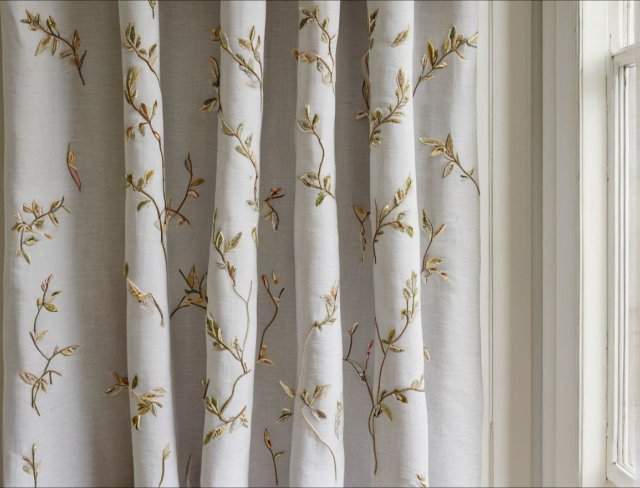
Conclusion
Curtain embroidery epitomizes the enduring fusion of tradition and innovation within interior design. Through the intricate stitches of hand embroidery and the precision of modern techniques, artisans infuse curtains with narratives that transcend mere ornamentation, embodying beauty, elegance, and personal expression.
In our exploration of curtain embroidery’s rich tapestry, we’ve unearthed its historical roots, delved into techniques, materials, patterns, and contemporary applications. Each thread and stitch serves as a testament to the artistry and intention woven into every curtain, transforming spaces into sanctuaries resonant with emotion and storytelling.
As we navigate the future, let us continue to honor curtain embroidery’s legacy while embracing new possibilities. By adorning our homes with curtains that blend tradition with innovation, we not only enhance our surroundings but also enrich our lives with beauty, meaning, and creativity. Curtain embroidery transcends craft, it is a journey of discovery, inspiring us to weave our narratives into the fabric of life, one stitch at a time.
Now that you have read through this article, feel free to SHOP for products we have created. If you are looking for something special which isn’t in our store, feel free to contact us.

